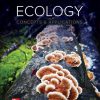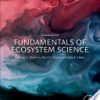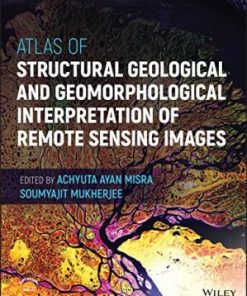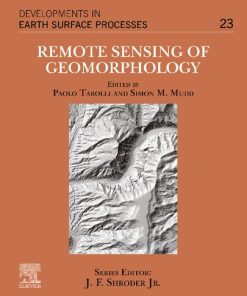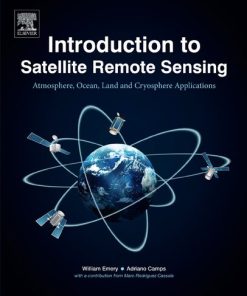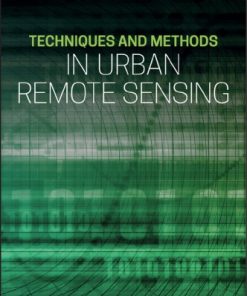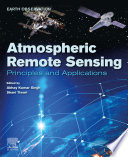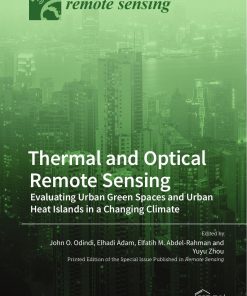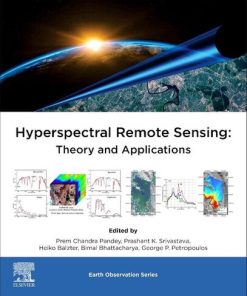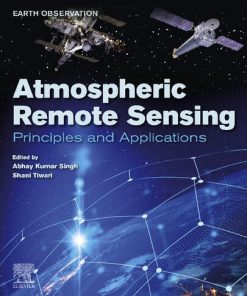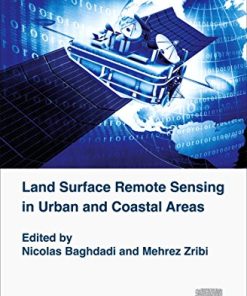(EBook PDF) Remote Sensing of Ocean and Coastal Environments 1st edition by Meenu Rani, Kaliraj Seenipandi, Sufia Rehman, Pavan Kumar, Haroon Sajjad 0128231602 9780128231609 full chapters
$50.00 Original price was: $50.00.$25.00Current price is: $25.00.
Remote Sensing of Ocean and Coastal Environments 1st edition by Meenu Rani, Kaliraj Seenipandi, Sufia Rehman, Pavan Kumar, Haroon Sajjad – Ebook PDF Instant Download/DeliveryISBN: 0128231602, 9780128231609
Full download Remote Sensing of Ocean and Coastal Environments 1st edition after payment.
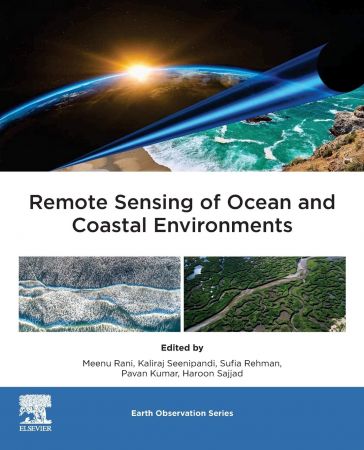
Product details:
ISBN-10 : 0128231602
ISBN-13 : 9780128231609
Author: Meenu Rani, Kaliraj Seenipandi, Sufia Rehman, Pavan Kumar, Haroon Sajjad
Remote Sensing of Ocean and Coastal Environments advances the scientific understanding and application of technologies to address a variety of areas relating to sustainable development, including environmental systems analysis, environmental management, clean processes, green chemistry and green engineering. Through each contributed chapter, the book covers ocean remote sensing, ocean color monitoring, modeling biomass and the carbon of oceanic ecosystems, sea surface temperature (SST) and sea surface salinity, ocean monitoring for oil spills and pollutions, coastal erosion and accretion measurement.
Remote Sensing of Ocean and Coastal Environments 1st Table of contents:
1 – Remote sensing of Ocean and Coastal Environment – Overview
1. Introduction
2. Satellite remote sensing
2.1 Oil spill
2.2 Current velocity extraction and mapping
2.3 Sea surface temperature
2.4 Sea surface salinity
2.5 Coastal currents
3. Geographical information system
4. Fundamental techniques
4.1 Eulerian technique
4.2 Lagrangian technique
References
2 – Ocean and coastal remote sensing: platforms, sensors, instruments, data products, tools, and tec
1. Introduction
2. Platforms and sensors
3. Data products
4. Tools and techniques
4.1 Prominent indices used in coastal studies
4.2 Challenges in coastal remote sensing
References
Further reading
3 – Ocean remote sensing for seasonal predictability of phytoplankton (chl-a) biomass in the Souther
1. Introduction
2. Study area profile
3. Materials and methods
4. Results and discussion
4.1 Spectral reflectance of Landsat 8 OLI for chl-a extraction
4.2 Estimation of phytoplankton (chl-a) biomass
4.3 Phytoplankton (chl-a) biomass variability in premonsoon (September 2018)
4.4 Phytoplankton (chl-a) biomass variability in monsoon (December 2017)
4.5 Phytoplankton (chl-a) biomass variability in postmonsoon (March 2018)
4.6 Seasonal variability of phytoplankton (chl-a) biomass during 2017–2018
5. Conclusions
Acknowledgments
References
Further reading
4 – Ocean remote sensing for spatiotemporal variability of wave energy density and littoral current
1. Introduction
2. Study area
3. Materials and methods
3.1 Wave energy density calculation
3.2 Littoral current velocity measurement
4. Result and discussion
4.1 Spatiotemporal variability of wave energy density
4.2 Seasonal variability of wave energy density in 2017–2018
4.3 Littoral current velocity and seasonal movement
5. Conclusions
Acknowledgment
References
5 – Ocean remote sensing of seawater salinity and its seasonal variability: a case study of Southern
1. Introduction
2. Study area
3. Materials and methods
4. Results and discussion
4.1 SSS spatial variability in monsoon (December 2017)
4.2 SSS spatial variability in premonsoon (September 2018)
4.3 SSS spatial variability in postmonsoon (March 2018)
4.4 SSS seasonal variability in 2017–2018
4.5 SSS validation using linear regression analysis and RMSE estimation
5. Conclusions
Acknowledgments
References
6 – Impacts of placer mining on groundwater and air quality in the Chavara coastal stretch of Kerala
1. Introduction
2. Materials and methods
2.1 Study area
2.2 Sample collection and analysis
2.2.1 Water environment
2.3 Method of study
2.3.1 The kriging formula
2.4 Air environment
3. Results and discussion
3.1 Water environment
3.1.1 Site A
3.1.2 Evaluation of saltwater contamination in site A samples
3.1.3 Site B
3.1.4 Evaluation of saltwater contamination in site B samples
3.2 Air environment
4. Conclusion
4.1 Mitigation measures to reduce impact
4.1.1 Water environment
4.1.2 Air environment
Acknowledgments
References
Further reading
7 – Evaluation of coastal sediments: an appraisal of geochemistry using ED-XRF and GIS techniques
1. Introduction
2. Study area
3. Materials and method
4. Results and discussion
5. Conclusion
Acknowledgments
References
8 – Assessing the impact of aquafarming on landscape dynamics of coastal West Bengal, India using re
1. Introduction
2. Methodology
2.1 Area of study
2.2 Data acquisition and preprocessing
2.3 LULC classification
2.4 Buffer based zonation from coast to inland
2.5 Change detection analysis
2.6 Application of landscape metrics
3. Results
3.1 LULC transformation scenario
3.2 Spatiotemporal growth pattern of aquaculture and impact on environment
3.3 Change scenario of class-level landscape metrics
4. Discussion
4.1 Aquaculture as a driver of LULC change
4.2 Environmental impact of aquacultural spread
5. Conclusions
Supplementary data
Acknowledgments
References
9 – Applications of geostationary satellite data in the study of ocean and coastal short-term proces
1. Introduction
2. Geostationary satellite data
2.1 GOCI data
2.2 Himawari-8 data
3. Applications: two cases in the East China Sea short-term cross-shelf process
3.1 A complete evolutionary process of submesoscale frontal waves off the southeast coast of China
3.1.1 Evolution of frontal waves
3.1.2 Tidal oscillation of frontal waves
3.1.3 The discussion of mechanism
3.2 The short-term variation of surface upwelling off northeastern Taiwan
3.2.1 The whole short-term variation of surface upwelling
3.2.2 A preliminary discussion of mechanism
4. Conclusion
References
10 – Evaluation of heavy metals in coastal aquifers and seawater: an appraisal of geochemistry using
1. Introduction
2. Study area
3. Materials and methods
3.1 Sampling and laboratory analysis
3.2 Heavy metal pollution index
3.3 Principal component analysis of Landsat imagery
4. Results and discussion
4.1 ICPMS results
4.2 Heavy metal pollution index
4.3 Correlation coefficient
4.4 Monitoring heavy metal concentration using Landsat imagery
5. Conclusion
Acknowledgments
References
11 – Remote sensing for exploring heavy mineral deposits: a case study of Chavara and Manavalakurich
1. Introduction
2. Study area
3. Materials and methods
4. Results and discussion
5. Conclusion
Acknowledgments
References
12 – Simulation studies about the role of Lakshadweep-Maldives ridge in determining tsunami characte
1. Introduction
2. Methodology
2.1 Study area
2.2 Method
3. Results and discussion
4. The influence of LMR for 2004 Sumatra tsunami
5. The effect of LMR for 1945 Makran-like tsunami
6. Conclusions
Acknowledgments
References
13 – Measuring the vulnerability of coastal ecosystems in a densely populated west coast landscape,
1. Introduction
2. Study area
3. Methodology
3.1 Data processing
3.2 Taxonomic investigation
3.3 Coastal population study
3.4 Coastal regulation zone maps
3.5 Data source and instruments
4. Analysis and discussions
4.1 North Kerala (Kasaragod–Malappuram)
4.2 Central Kerala (Thrissur–Alappuzha)
4.3 South Kerala (Kollam and Thiruvananthapuram)
4.4 CRZ notification and mangrove conservation
5. Results
6. Conclusion
Acknowledgments
References
14 – Modeling of coastal environmental vulnerability in South India: a multiple parametric approach
1. Introduction
2. The geographical profile of the study area
3. Materials and methods
3.1 The GIS-based EVI modeling and parameters assigned weights
4. Results and discussions
4.1 Wave energy and shoreline impacts
4.2 Groundwater table fluctuation
4.3 Coastal sediment load change rate
4.4 Storm surge or wave run-up
4.5 Suspended sediments or river discharge rate
4.6 Coastal vegetation change rate
4.7 Coastal mining and quarrying
4.8 Seawater intrusion impacts (GALDIT score)
4.9 The coastal population growth rate
4.10 Assessment and mapping of vulnerability to environmental damages
5. Conclusions
Acknowledgments
References
15 – Evaluation of suspended sediment concentration and heavy metal distribution in Ashtamudi Lake,
1. Introduction
2. Study area
3. Materials and methods
3.1 Estimation of SSC and its monthly variability
3.2 Heavy metal: spatial distribution analysis
4. Results and discussion
4.1 Estimation of suspended sediment concentration
4.2 GIS mapping of heavy metal spatial distribution
4.3 Assessment of heavy metal pollution status
4.3.1 Pollution load index
4.3.2 Contamination degree
4.3.3 Modified contamination degree
4.3.4 Potential ecological risk index
5. Conclusions
Acknowledgments
References
16 – Seasonal variability of sea surface temperature in Southern Indian coastal water using Landsat
1. Introduction
2. Study area
3. Materials and methods
4. Results and discussion
4.1 SST spatial variability in monsoon (December 2017)
4.2 SST spatial variability in premonsoon (September 2018)
4.3 SST spatial variability in postmonsoon (March 2018)
4.4 SST seasonal variability during 2017–2018
4.5 SST validation using linear regression analysis and RMSE estimation
5. Conclusions
Acknowledgments
References
17 – Ocean remote sensing of suspended sediment variability in Southern Indian coastal water region
1. Introduction
2. Profile of the study area
3. Materials and methods
4. Results and discussion
4.1 SSC spatial variability in premonsoon (September 2018)
4.2 SSC spatial variability in monsoon (December 2017)
4.3 SSC spatial variability in postmonsoon (March 2018)
4.4 SSC seasonal variability in 2017–2018
5. Conclusions
Acknowledgments
References
Further reading
18 – Modeling of coastal vulnerability to sea-level rise and shoreline erosion using modified CVI mo
1. Introduction
2. Study area
3. Materials and methods
3.1 GIS modeling of modified CVI algorithm
4. Results and discussion
4.1 Coastal geomorphic landforms
4.2 Shoreline erosion/accretion rate
4.3 Coastal slope (or) topography
4.4 Relative sea-level change rate
4.5 Mean significant wave height
4.6 Mean tidal level
4.7 Coastal relief (or) elevation range
4.8 Storm surge (or) wave run-up
4.9 Land use and land cover change
4.10 Assessment and mapping of coastal vulnerability to physical damage
5. Conclusion
Acknowledgments
References
Further reading
19 – An investigation of a credible strategy for coral reef bleaching and its management using a geo
1. Introduction
2. Study area
2.1 Marine eco-biodiversity
2.2 Marine biology
2.3 Coastal activity
2.4 Physiological conditions
2.5 Water quality
2.6 Sediment quality
3. Materials and methodology
3.1 IRS Linear Imaging Self-Scanning Sensor III data
3.2 Data processing
3.3 Supervised classification
3.4 Sea surface temperature
3.5 Radiance measurement
3.6 Multispectral imagery
3.7 Pixel-based integration of live coral reef
4. Results and discussion
4.1 Irradiation of vector data cloning
4.2 Satellite data processing
4.3 Image correction and reformation
4.4 Classification and statistical tabulation
4.5 Percentage of coral cover display
4.6 Crucial climate change and sea surface temperature
References
20 – Assessment of shoreline vulnerability in parts of the coastline of Kasaragod district, Kerala,
1. Introduction
2. History
3. Study area
4. Materials and methods
4.1 Digital shoreline analysis system
4.2 Analysis using DSAS in ArcGIS
4.2.1 Change rate calculation by EPR and LRR
4.2.2 Ground truthing
5. Results and discussion
5.1 Geospatial analysis of coastline
5.2 Shoreline change rate analysis
6. Conclusion
References
21 – Insight to the spatial-temporal extent of mangrove forests in the northern coast of Kerala
1. Introduction
1.1 Mangrove origin
1.2 Ecology
1.3 Factors governing the mangrove ecosystem
1.4 Mangroves: benefits
1.5 Geospatial application in mangrove mapping
2. Study area
2.1 Mangroves in Kasaragod
2.2 Mangrove locations in the Kasaragod district
2.3 Threats of mangrove in Kasaragod locality
3. Methodology
4. Result and discussion
5. Conclusion
People also search for Remote Sensing of Ocean and Coastal Environments 1st:
what is coastal geography
types of coastal environments
remote sensing ocean
remote sensing oceanography
remote sensing ocean floor
Tags:
Remote Sensing,Ocean,Coastal Environments,Meenu Rani
You may also like…
Earth Sciences - Geology
Atlas of Structural Geological and Geomorphological Interpretation of Remote Sensing Images
Earth Sciences - Geodesy
Astronomy - The Solar System - Astronomical Studies & Observations
Optics & Laser


